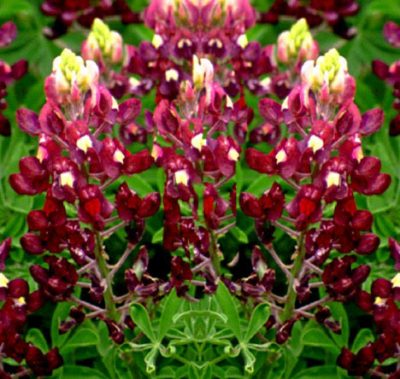Bluebonnet (Maroon)
Lupinus texensis 'Texas Maroon'

Our pick of the week is a maroon bluebonnet, a Texas Super Star selection.
Although you may never see them, maroon bluebonnets actually ARE found in nature, along with a spectrum from white, to pink, to deep blue. The reason we see so many blue bluebonnets, is because of genetics. The blue flower color is dominant and the other colors are recessive. Like our other native wildflowers, maroon bluebonnet seeds should be planted in the fall.
But now is the perfect time to plant transplants. When the seeds dry in May or so, collect them to plant next year. In the meantime, the bluebonnet plants will fixate nitrogen in the soil to make germination easier next year.
And be forewarned: since bluebonnets are annuals, with the parent plant dying after seed-production, the maroon color will be lost in your population if there are any blue bluebonnets in the area to pollinate them.
Bluebonnets perform best in full sun and prefer well-drained soil. The crown of this plant remains at soil level, with only the leaves and flower-stalks elongating, so if the soil is too heavy or stays too wet, your bluebonnets will rot quite quickly.
If you’d like, you can allow the seeds to naturalize in your garden, or you can collect them once the pods have dried on the plant. Bluebonnet seeds have a very hard seed-coat and require some physical scarring to soften and imbibe water. In nature, scarification occurs in varying ways, but if you collect seed for resowing, you could use a file to slough away some of the seed coat before planting next October-November.
categories:
tags:
